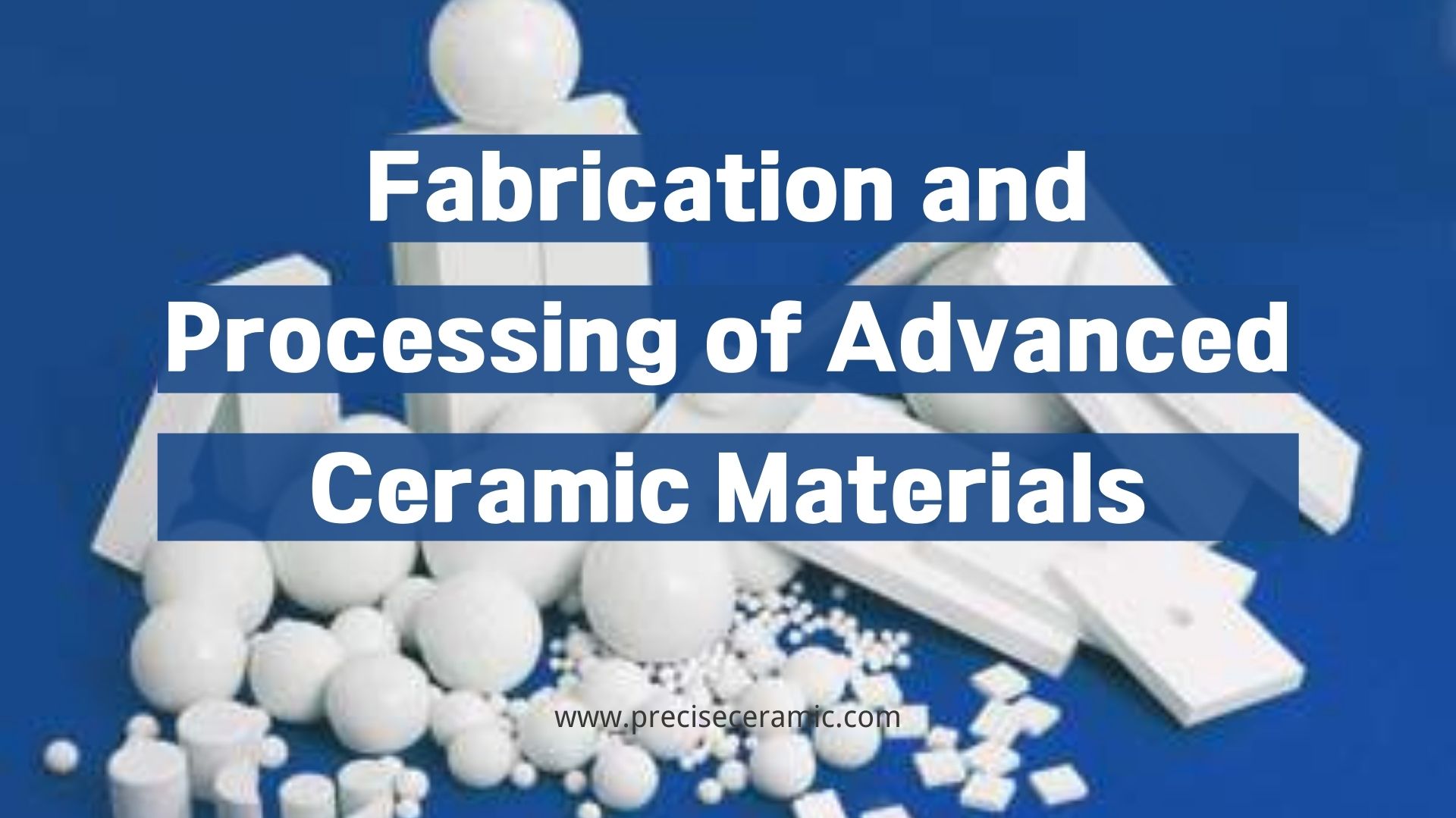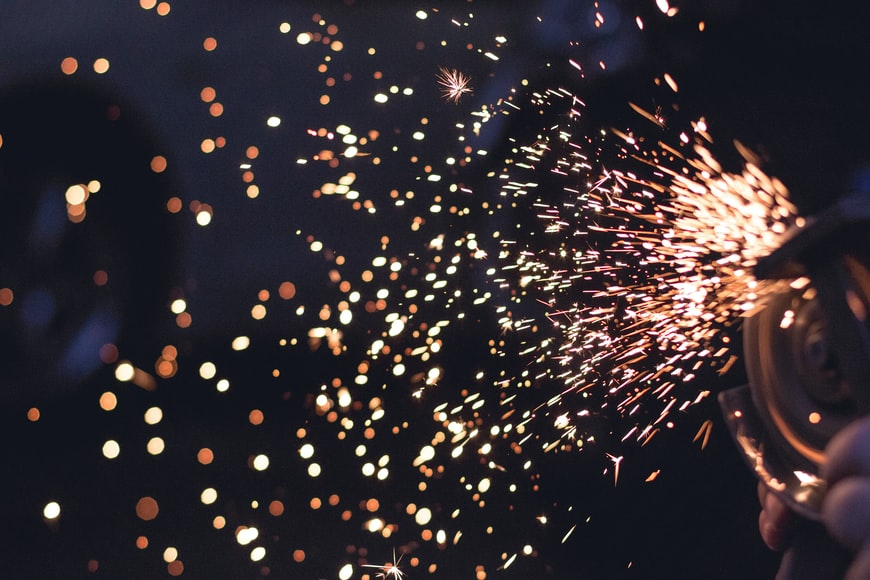Fabrication and Processing of Advanced Ceramic Materials

Ceramics melt at high temperatures and exhibit a brittle behavior under tension. As a result, the conventional melting, casting and thermo-mechanical processing routes are not suitable to process the polycrystalline ceramics. Inorganic glasses, though, make use of lower melting temperatures due to the formation of eutectics. Hence, most ceramic products are made through powder processing starting with ceramic powders. The powder processing of ceramics is very close to that of metals. However, there is an important consideration in ceramic-forming that is more prominent than in metal forming: it is dimensional tolerance. Post forming shrinkage is much higher in ceramics processing because of the large differential between the final density and the as-formed density. Glasses, however, are produced by heating the raw materials to an elevated temperature above which melting occurs. Most commercial glasses are of the silica-soda-lime variety, where silica is supplied in form of common quartz sand, soda (Na2O) in form of soda ash (Na2CO3) while the lime (CaO) is supplied in form of limestone (CaCO3). Different forming methods- pressing, blowing, drawing and fiber-forming- are widely in practice to fabricate glass products. Thick glass objects such as plates and dishes are produced by pressing, while the blowing is used to produce objects like jars, bottles and light bulbs.
Grinding & Milling
Ceramic powder processing consists of powder production by milling/grinding, followed by fabrication of green product, which is then consolidated to obtain the final product. A powder is a collection of fine particles. Synthesis of powder involves getting it ready for shaping by crushing, grinding, separating impurities, blending different powders, drying to form soft agglomerates. Different techniques such as compaction, tape casting, slip casting, injection molding and extrusion are then used to convert processed powders into a desired shape to form what is known as green ceramic. The green ceramic is then consolidated further using a high-temperature treatment known as sintering or firing. As-mined raw materials are put through a milling or grinding operation in which particle size is reduced to and physically ‘liberate’ the minerals of interest from the rest of the ‘gangue’ material. Wet milling is much more common with ceramic materials than with metals. The combination of dry powders with a dispersant such as water is called slurry. Ball- and vibratory- milling is employed to further reduce the size of minerals and to blend different powders. Ceramic powders prepared are shaped using number of techniques, such as casting, compaction, extrusion/hydro-plastic forming, injection molding.

Tape Casting
Tape casting, also known as doctor blade process, is used for the production of thin ceramic tapes. In this technique slurry containing ceramic particles, solvent, plasticizers, and binders is then made to flow under a blade and onto a plastic substrate. The shear thinning slurry spreads under the blade. The tape is then dried using clean hot air. Later on the tape is subjected to binder burnout and sintering operations. Tape thickness normally ranges between 0.1 and 2 mm. Commercially important electronic packages based on alumina substrates and barium titanate capacitors are made using this technique. A schematic diagram of the doctor blade process is shown in the figure.
Slip Casting
Slip casting is another casting technique widely used. This technique uses aqueous slurry, also known as slip, of ceramic powder. The slip is poured into a plaster of Paris (CaSO4:2H2O) mold. As the water from the slurry begins to move out by capillary action, a thick mass builds along the mold wall. When sufficient product thickness is built, the rest of the slurry is poured out (drain casting). It is also possible to continue to pour more slurry in to form a solid piece (solid casting).
Extrusion & Injection Molding
Extrusion and injection molding techniques are used to make ceramic products like tubes, bricks, tiles, etc. The basis for the extrusion process is a viscous mixture of ceramic particles, binder and other additives, which is fed through an extruder where a continuous shape of green ceramic is produced. The product is cut to the required lengths and then dried and sintered. Injection molding of ceramics is similar to that of polymers. Ceramic powder is mixed with a plasticizer, a thermoplastic polymer, and additives. Then the mixture is injected into a die with the use of an extruder. The polymer is then burnt off and the rest of the ceramic shape is sintered at suitable high temperatures. Ceramic injection molding is suitable for producing complex shapes.
Compaction & Sintering
The most popular technique to produce relatively simple shapes of ceramic products in large numbers is a combination of compaction and sintering. For example electronic ceramics, magnetic ceramics, cutting tools, etc. The compaction process is used to make green ceramics that have respectable strength and can be handled and machined. The time for the compaction process varies from within a minute to hours depending on the complexity and size of the product. Basically compaction process involves applying equal pressure in all directions to a mixture of ceramic powder to increase its density. In some cases, compaction involves the application of pressure using oil/fluid at room temperatures, called cold iso-static pressing (CIP). Then the green ceramic is sintered with or without pressure. CIP is used to achieve higher ceramic density or where the compaction of more complex shapes is required. In some instances, parts may be produced under conditions in which compaction and sintering are conducted under pressure at elevated temperatures. This technique is known as hot isostatic pressing (HIP), and is used for refractory and covalently bonded ceramics that do not show good bonding characteristics under CIP. The HIP is also used when close to none porosity is the requirement. Another characteristic feature of the HIP is high densities can be achieved without appreciable grain growth.
Sintering is the firing process applied to green ceramics to increase their strength. Sintering is carried out below the melting temperature thus no liquid phase presents during sintering. However, for sintering to take place, the temperature must generally be maintained above one-half the absolute melting point of the material. During sintering, the green ceramic product shrinks and experiences a reduction in porosity. This leads to an improvement in its mechanical integrity. These changes involve different mass transport mechanisms that cause the coalescence of powder particles into a more dense mass. With sintering, the grain boundary and bulk atomic diffusion contribute to densification, surface diffusion, and evaporation condensation can cause grain growth, but do not cause densification. After pressing, ceramic particles touch one another. During the initial stages of sintering, necks form along the contact regions between adjacent particles thus every interstice between particles becomes a pore. The pore channels in the compact grow in size, resulting in a significant increase in strength. With the increase in sintering time, pores become smaller in size. The driving force for the sintering process is the reduction in total particle surface area, and thus the reduction in total surface energy. During sintering, composition, impurity control and oxidation protection are provided by the use of vacuum conditions or inert gas atmospheres.
Conclusion
Thank you for reading our article and we hope it can help you to have a better understanding of several fabrication and processing methods for ceramic materials. For more information, please visit https://www.preciseceramic.com/.
{{item.content}}
LEVE A REPLY
{{item.children[0].content}}
{{item.content}}
LEAVE A REPLY
SUBSCRIBE OUR NEWSLETTER
- AlN Ceramic Substrates: Enabling Next-Gen Electrostatic Chucks
- The Amor of Semiconductor Tools: Why High-Purity Al2O3 & AlN Are Preferred for Plasma Process Chambers
- Silicon Carbide - Ultra-High Temperature Ceramics for Extreme Environments
- Aluminum Oxide Ceramics: Properties and Applications
- Boron Nitride Coatings: The Solution for Molten Metal Applications










